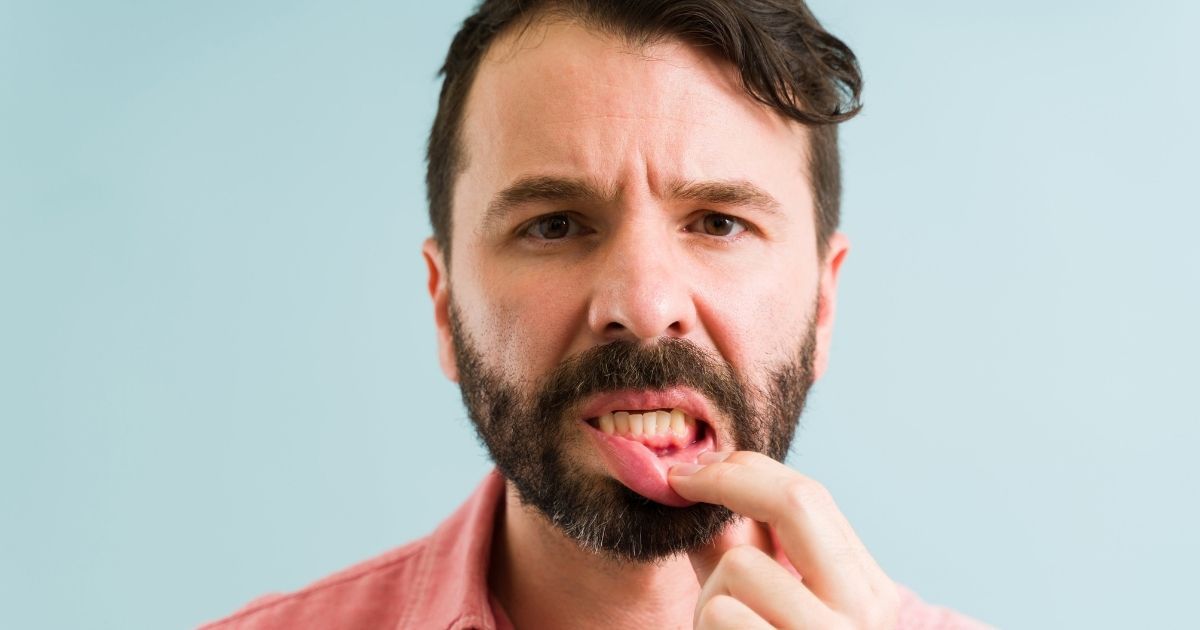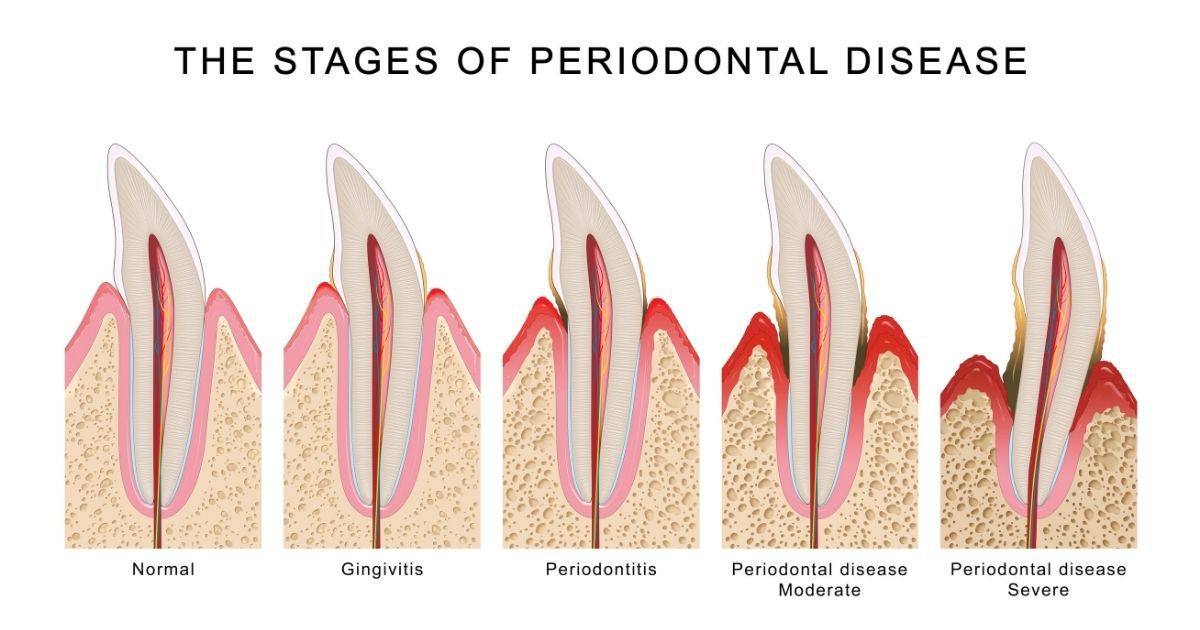How long can you keep your teeth with periodontal disease?
Advanced forms of periodontal disease, if left untreated, can cause tooth loss. But there’s no easy answer to how long you can keep your teeth with periodontal disease since it’s so dependent on how early the disease is caught and how far the symptoms have progressed.
We’ve put together a guide to periodontal disease to help you understand its causes, what stages it progresses through, and how it can be treated to avoid tooth loss.
Reading time: 4 minutes

If caught in the early stages of gingivitis, periodontal disease is generally reversible through normal dental hygiene practices or thorough cleaning carried out by a dental professional. In this case, it’s highly unlikely that you’ll lose teeth to the disease.
Later stages, especially advanced periodontitis, pose more risk. Damage to the gums and bone caused by bacteria can create ‘pockets’ around the teeth, loosening them and making them more likely to fall out.
However, the timeline for tooth loss from periodontitis is still dependent on lots of factors, including if treatment is carried out to minimise the symptoms.
What is periodontal disease?
Periodontal disease, also known as gum disease, is an infection in the soft tissue that surrounds teeth and holds them in place. It’s caused by bacteria contained in plaque that builds up on teeth and can result in symptoms including bleeding gums, pain, and tooth loss.
There are two main types of periodontal disease: gingivitis and periodontitis. These are technically separate conditions, but the milder form, gingivitis, can develop into more serious periodontitis if left untreated.
It’s estimated that almost half of all UK adults have some form of periodontal disease, making it one of the most common chronic inflammatory diseases. And, although it’s most prevalent in 60-64 year olds, periodontal disease can affect people of all ages.
Stages of periodontal disease
Periodontal disease typically advances through four main stages, gradually increasing in severity:
Gingivitis
Gingivitis is the initial stage of gum disease and features relatively mild symptoms. Inflammation caused by the bacteria in plaque can cause red or swollen gums and bleeding when brushing teeth. The symptoms of gingivitis are generally reversible through proper oral hygiene practices like brushing and flossing.
Mild periodontitis
If left untreated, gingivitis can develop into the first stage of periodontitis as the bacteria contained in plaque moves underneath the gumline and reaches the bone. At this stage, the gum may start to loosen around the teeth, creating pockets which the bacteria fill. Symptoms will worsen as the bacteria damages the gums, often causing persistent bad breath and pain.
Moderate periodontitis
Moderate periodontitis involves the pockets around the teeth created in the mild stage deepening, allowing bacteria to destroy more gum tissue and bone. It’s typically marked by noticeably receding gums, teeth starting to become loose, increased pain or sensitivity when chewing, and yellow pus around the gum line.
Advanced periodontitis
The final stage of periodontitis involves significant destruction of the gum tissue surrounding teeth and the bone that holds them in place. Advanced periodontitis symptoms include severely receded gums, abscesses caused by infection, and potential tooth loss.

Periodontal disease treatment
Treatment options for periodontal disease depend on what stage it’s at. If you suspect you have periodontal disease, the first step is to visit a dental professional to have a full check-up.
They’ll be able to examine your teeth for plaque build-up, measure gum recession, check for pockets that have formed between your gums and teeth, and take X-rays to assess bone loss. They can then advise on the best form of treatment.
Gingivitis treatment
Treatment for gingivitis is relatively simple, involving a thorough professional cleaning (called scaling and root planning) to remove all traces of plaque or tartar, which are the two main sources of bacteria that affect the gums.
Once any build-ups of plaque and tartar are removed, the symptoms of gingivitis should gradually drop off and ongoing dental hygiene will help to keep them from returning.
Periodontitis treatment
Advanced periodontal disease treatment, used when the disease has progressed into one of the forms of periodontitis, varies depending on the extent of damage to the gums and surrounding bone.
- Professional cleaning can help to reverse symptoms in milder cases of periodontitis but more severe cases can require dental surgery like soft tissue grafts or bone grafts.
- In particularly advanced cases, your dental professional might recommend proactive tooth extraction due to periodontal disease. However, provided there’s sufficient bone density in the surrounding area, you can replace any lost teeth with dental implants.
- It’s also often possible to get dental implants with bone loss. Dental professionals can use a bone graft to replace any bone that’s been lost through periodontitis, providing enough structure for regular or mini dental implants to be installed.